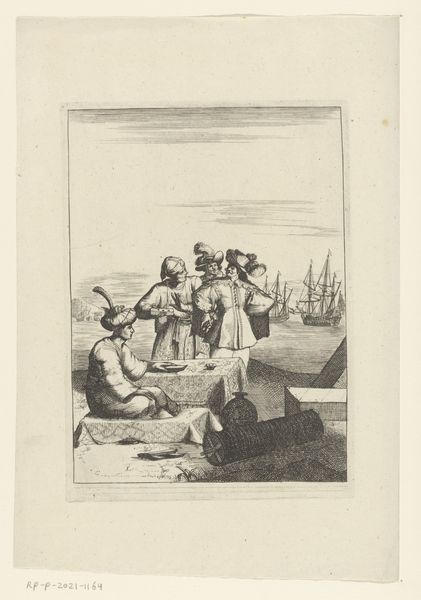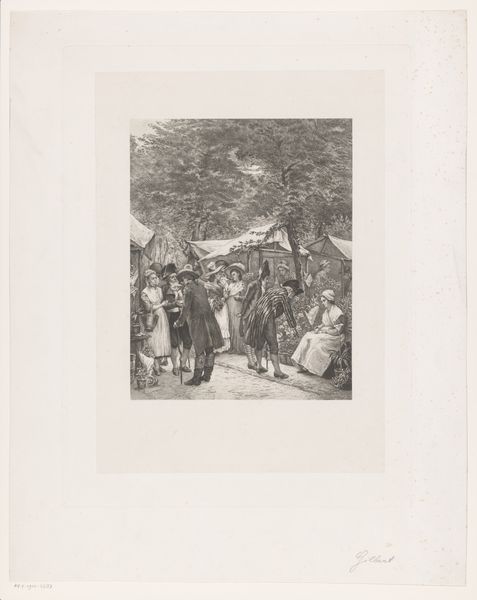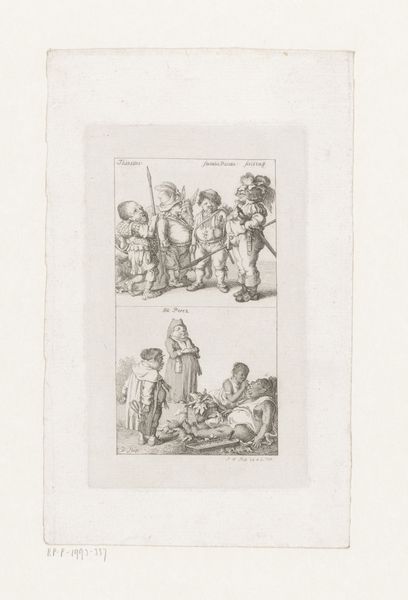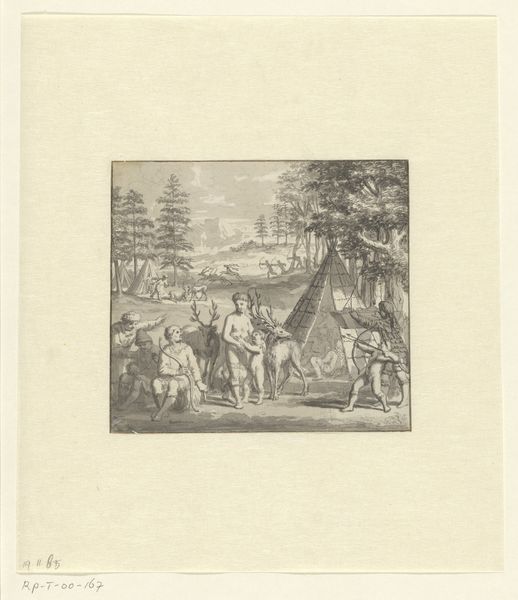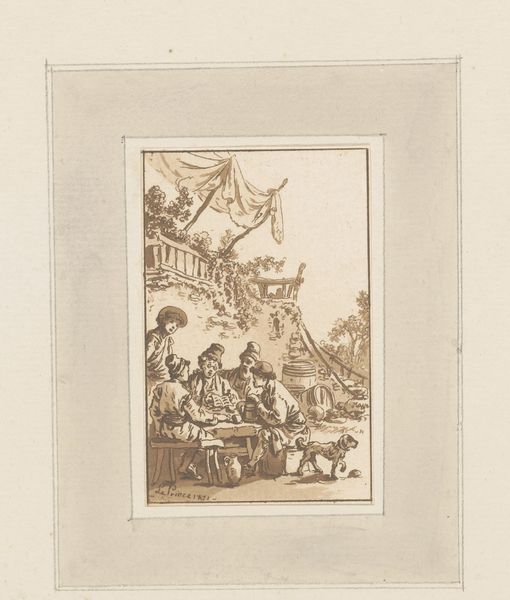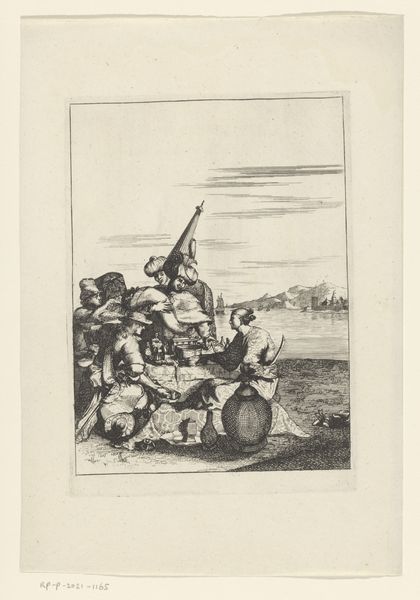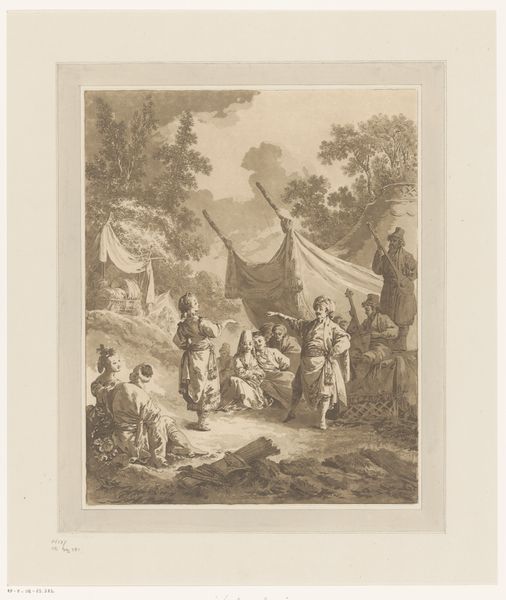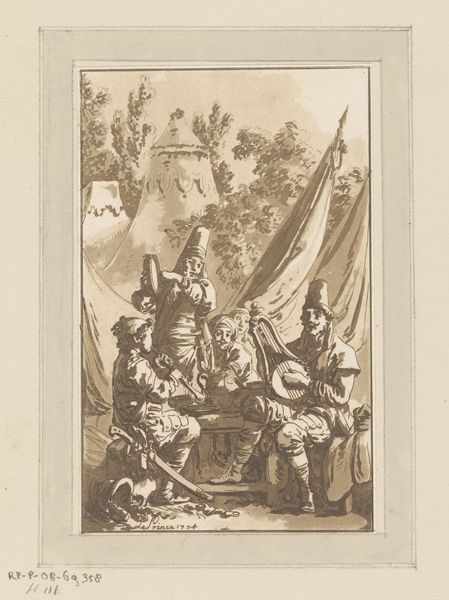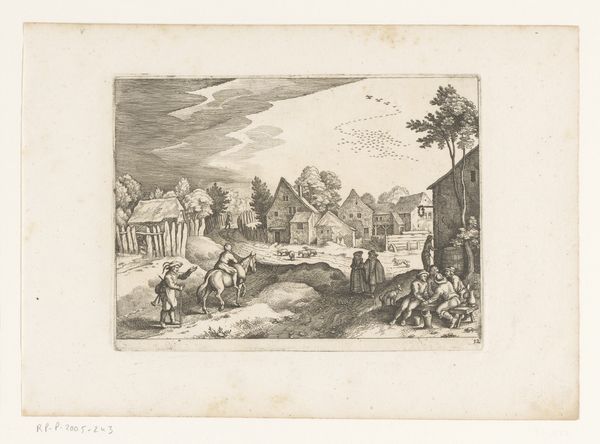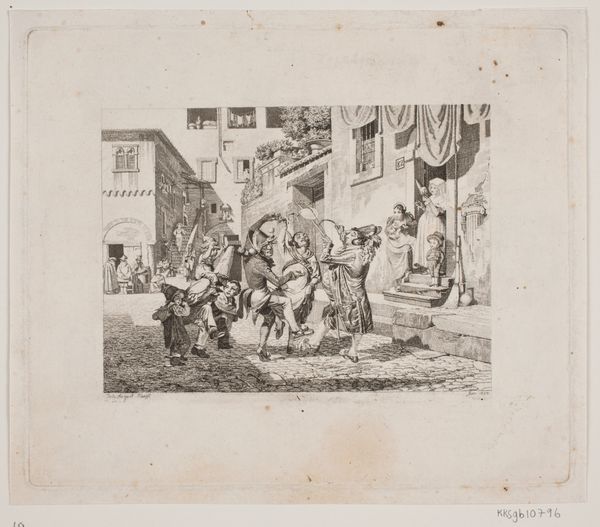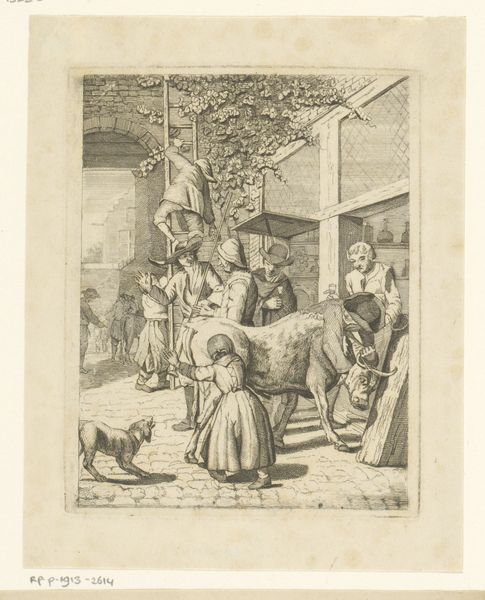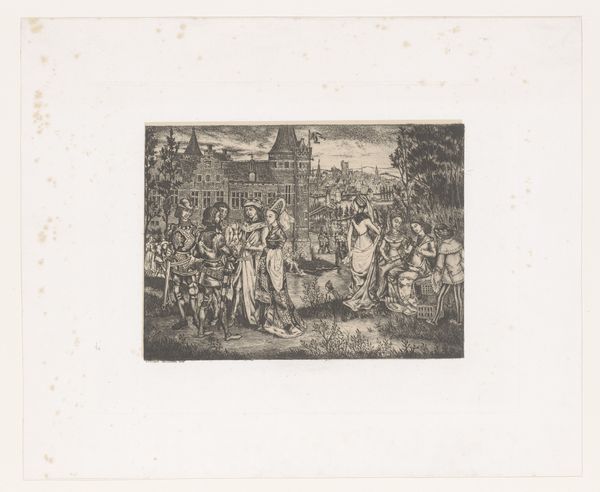
Vier vrouwen dansen rondom vier zittende mannen, mogelijk te China 1668 - 1725
0:00
0:00
anonymous
Rijksmuseum
print, engraving
# print
#
asian-art
#
old engraving style
#
genre-painting
#
history-painting
#
engraving
Dimensions: height 210 mm, width 150 mm
Copyright: Rijks Museum: Open Domain
Curator: Immediately, I am struck by the sheer busyness of this composition, a crowded scene that still somehow feels airy and open. Editor: Indeed. What we're looking at here is a print from the Rijksmuseum’s collection entitled "Four Women Dancing Around Four Seated Men, Possibly in China," dating roughly from 1668 to 1725. The piece is an engraving made by an anonymous artist. Curator: China! Well, the presence of the pagoda certainly anchors it. The dance feels ceremonial, celebratory even, and look at how the raised hands create echoes of upward motion, almost reaching towards the stylized clouds above. Is this some sort of harvest festival or a diplomatic event maybe? Editor: It could be, yes. Note how the engraver utilizes relatively thin, controlled lines. This generates an intricate level of detail in their garments, fans, and especially in the subtle textures of the landscape. And consider the significance of a European artist portraying an image of an event they've possibly never seen. Curator: That adds another layer to its symbolic value. The print isn’t necessarily presenting an objective truth; instead, it showcases how the Western world viewed China. Observe, for instance, the depiction of these dancers with wide open arms in this communal gathering, evoking exoticism, reverence, or even perhaps, romanticism. Editor: You are correct. Moreover, what does the inclusion of figures with clearly differentiated roles, active dancers and seated men imply about status and power dynamics? Curator: It adds depth, inviting viewers to consider hierarchy, respect, and perhaps even the gender roles within this interpretation of Chinese society. Editor: Ultimately, analyzing this piece offers us not just an artistic window but one looking at cultural reception. The controlled medium allows for very clear representation. Curator: Agreed, leaving us with lingering impressions about our perceptions of "otherness." Editor: A testament to how even seemingly straightforward depictions carry deep encoding.
Comments
No comments
Be the first to comment and join the conversation on the ultimate creative platform.

